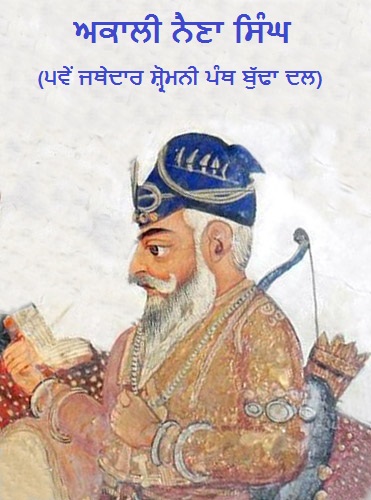Learn about Naina Singh, the 18th-century Nihang warrior famed for valor & guardianship of Akali Phula Singh, a Sikh icon. Explore his lasting legacy.
Explore the transformation of the term Akali from Nihangs to Shiromani Akali Dal, a key Sikh political force. Dive into its rich history and significance.
BHAI PHERU, GURDWARA (also called Gurdwara Sangat Sahib), named after its founder, the well known Udasi Sikh preacher Bhai Pherii (1640-1706), is located at Mien ki Maur, in Chuniari tahsil of Lahore district in Pakistan. During Sikh times, large endowments in land extending to about 2,750 acres were inscribed to the shrine which was administered by a line of priests belonging to Sangat Sahib Ke sect of Udasi Sikhs. As a campaign for bringing the Sikh places of worship under the management of a central body, the Shiromani Gurdwara Parbandhak Committee, formed in 1920, negotiations were opened with the mahant or custodian for the transfer of the Bhai Pheru Gurdwara and the landed property attached to it.
GOPAL SINGH (1883-1941), an Akali reformer, was born in November 1883 at the village of Sagari, in Rawalpindi district, now in Pakistan. His father, Sundar Singh (d. 1895) was a small shopkeeper. Within three years of Gopal Singh`s father`s death, his two elder brothers also passed away and the responsibility of looking after the family fell on him. He worked hard to see the family business flourish, and simultaneously started participating in the Singh Sabha activity in the district.
Explore the legacy of Labh Singh Babu, a key Akali leader who championed Sikh rights and led impactful protests in early 20th century India.
Discover the courageous life of Phula Singh Akali, a Sikh hero and leader under Maharaja Ranjit Singh, known for his valor and dedication to Sikh shrines.
Explore the historical legacy of Akali newspaper, a pivotal platform for Sikh nationalist expression and reformation efforts since 1920.
BHAI PHERU MORCHA, one of a series of campaigns in the Sikhs` agitation in the 1920`s for the reformation of their holy places. Gurdwara Sangat Sahib, located in Mien ke Maur in Lahore district, about 15 km from Chhanga Manga railway station, dedicated to the memory of Bhai Pheru (1640-1706), a masand or parish leader in the time of Guru Har Rai who was honoured for his devotion by Guru Gobind Singh with the titles of Sachchi Dahri (True Bearded) and Sangat Sahib, was an important shrine, with 2,750 acres of land attached to it, and was being managed by Mahant Kishan Das.
Explore the Guru Ka Bagh Morcha, a pivotal 1920s Sikh campaign for sacred reform near Amritsar, marking a historic stand against oppressive forces.




